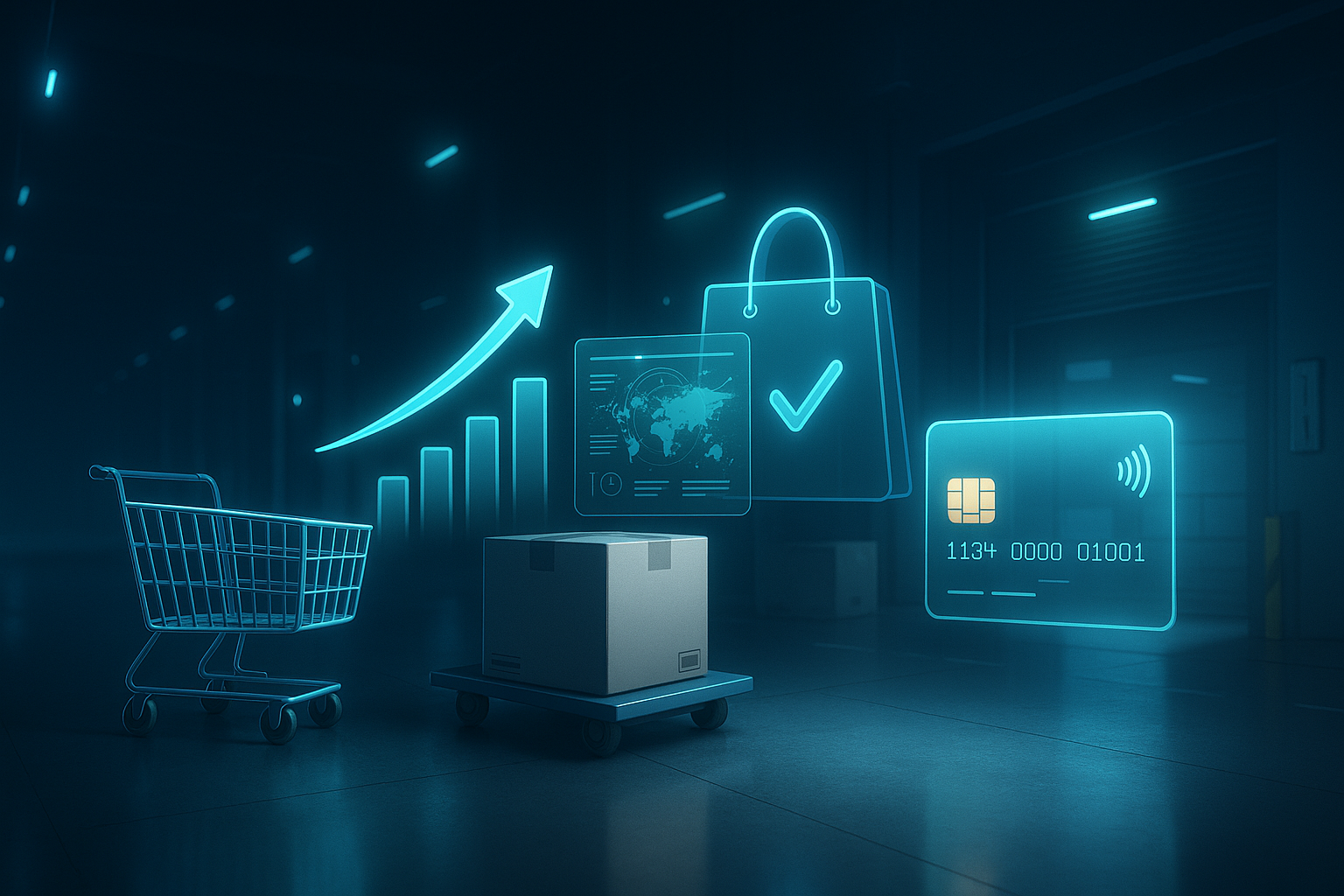

So, what is headless B2B ecommerce?
In simple terms, headless eCommerce is an open and API driven eCommerce solution that stores, manages and delivers content without a front-end delivery layer.
But what does that look like? In the case of a headless eCommerce platform, the front-end or “head” - which is usually a template or theme — has been detached and withdrawn, leaving only the back-end remaining. This results in all the functional elements of the platform, such as blogs and banner products becoming open to be managed programmatically, including the creation and management of various content components. Let’s take the example of a car that’s composed with an engine (the backend) and the shape of the car (frontend). With a headless solution, you have the full engine for your ecommerce solution and everything at hand for customization with API’s.
Because the front end user experience is decoupled from the back-end, there’s nothing you need to worry about as you facilitate that integration.
The most noticeable result of separating the front- and back-end is that your ability to chop, change and experiment with the platform is greatly increased, as any changes require much less dev work to complete.
This is in direct contrast to the traditional, rigid and monolithic eCommerce platform, where the head is firmly screwed on. In these cases, the platform is limited to delivering content in the form of websites, and in some cases native mobile apps.
Headless eCommerce: 7 key benefits
With a headless approach, you will have more freedom and flexibility to chop, change and be as creative as you like with the customer facing side of your business.
B2B eCommerce business owners will be blown away by the new powers at their disposal with a headless solution. Next-level tools such as APIs (Application Programming Interfaces) enable you to quickly and easily create, test and deploy innovative new approaches. Or the ability to easily manage customer specific pricing, order and cart management, catalog management, and order workflows without disturbing the backend system. These capabilities and much more make headless eCommerce a powerful option for B2B businesses.
1. Headless brings omnichannel opportunities
With a headless eCommerce platform, you can branch your content out across multiple channels quickly and easily, since it isn’t necessary to create a new back-end for each one. We call this ‘going omnichannel’.
With an omnichannel strategy in place, a customer no longer has to open a website in order to browse or purchase a product. Instead, they can use their Alexa device - or the built-in display in their fridge or smart car - while still maintaining the same quality and customization across all devices and platforms.
2. Instant updates
Tasks that once took up days of valuable time and resources, such as updating the front-end of your web store to keep up with constantly evolving customer needs, now take just hours.
Amazon, the king of eCommerce, uses a headless commerce solution that enables them to deploy updates every 11.7 seconds - a factor which has been instrumental in their success.
3. It’s future-proof
New technologies like the Internet of Things and progressive web apps are just around the corner, so it's important that you make the adjustments necessary now to ensure your platform is compatible with future ground-breaking technologies.
4. Agile marketing and seamless integrations
With the shackles of a large back-end workload removed, marketing teams equipped with headless eCommerce can make dramatic changes to your site in days instead of months.
Plus, by definition, a headless eCommerce solution has to have an API, which makes it easier to integrate and communicate with other platforms. This means you can add your brand to any new device, expanding your opportunities and outreach to more customers at the same time.
If that doesn’t sound like agile marketing, we don’t know what does.
5. Consistency in customer experience
With a headless approach, as your B2B consumers change over time, you can quickly and easily change your site to suit their new needs and requirements. All while ensuring that your brand’s style and tone is always consistent across channels, even when new ones are incorporated.
Since you’re not tied down to one platform and your front and back-end processes are separate, you have endless opportunities to keep up with digital marketing trends - without waiting for months or causing unwanted back-end changes.
This means you have endless opportunities when it comes to the customization of your content and user interface, as well as ensuring that your style and tone is always consistent across channels.
6. Better conversion optimization
Due to the ease at which you can make adjustments to your web stores with headless eCommerce, you have an infinite license to try and test different templates and approaches until you find the one that works best for you.
This enables you to run continuous tests and optimization cycles, which ensure you have a better understanding of your customers than your competitors, who aren’t equipped with headless eCommerce.
7. Speed is of the essence
Without headless eCommerce, building and scaling an omnichannel retail experience is a long and expensive process. However, because headless eCommerce is housed centrally and delivered via API anywhere, your time to market is significantly decreased. This means you can adopt new channels and enter new regions at lightning speed.
Are there any drawbacks to headless eCommerce?
Since headless eCommerce involves a back-end-based structure that lacks a single front-end, you now have multiple vendors and technologies on your plate. The heightened complexity associated with this will require a team of skilled developers to create and maintain.
This means that the incredible speed, customizability and optimizability of your platform will inevitably cost you more money and resources.
Headless eCommerce means potential loss of native eCommerce functionality
Depending on your existing eCommerce platform, you may lose some native front-end eCommerce functionality when you separate it from the back-end. For example, there are no previews, which means you won’t be able to see any changes you make until they’re implemented.
The decision to go headless will undoubtedly have far-reaching consequences for your company. By and large, these will be positive, but serious considerations about your resources and capability to scale for headless must be considered before it's undertaken.
There is, however, a straightforward way to alleviate these drawbacks. Front-end-as-a-service uses microservices in the cloud to provide programmers with all the modules they need. This means that instead of having to build all the different components of your eCommerce platform individually, from your shopping card to your chat bot, you can select the best components that are already made available by the front-end-as-a-service platform.
Wrapping up
The more you know about headless B2B eCommerce, the more it becomes clear that you need to start implementing it. Especially if you want your business to keep up with the pace of digital trends and evolving B2B consumer expectations.
Whether you like it or not, the direction of B2B eCommerce is omnichannel, and trying to adapt your business to each platform without a headless approach will only cost you in the long run.
In short, it’s not a question of ‘if’. It’s a question of ‘when?’

-modified.avif)



